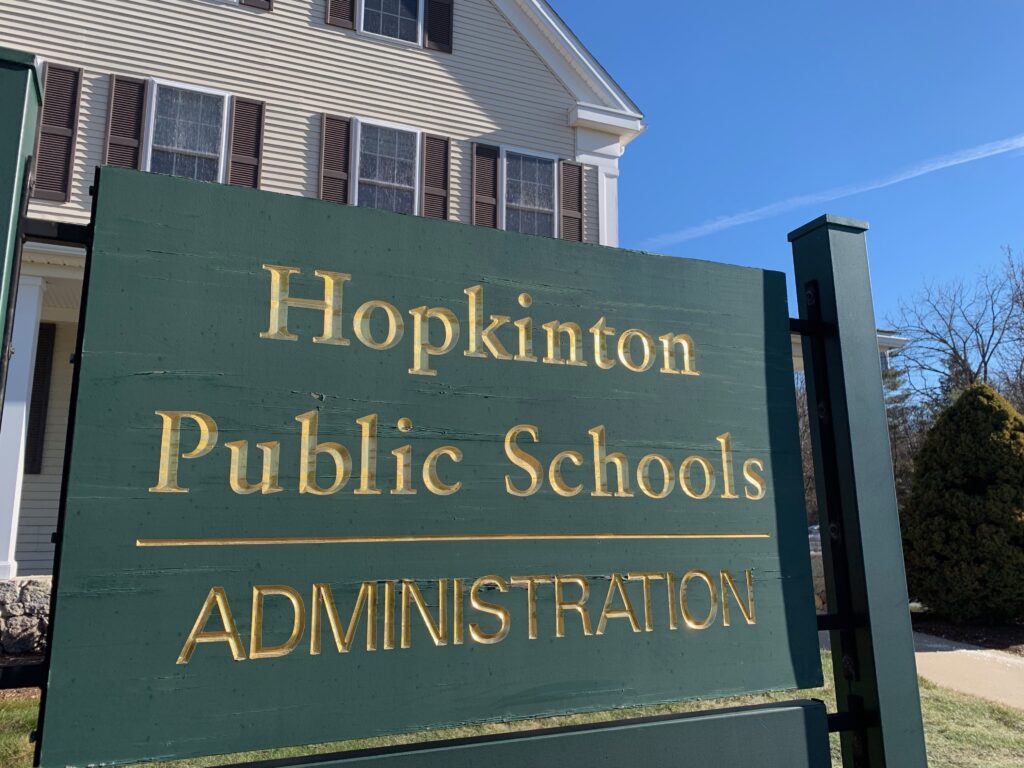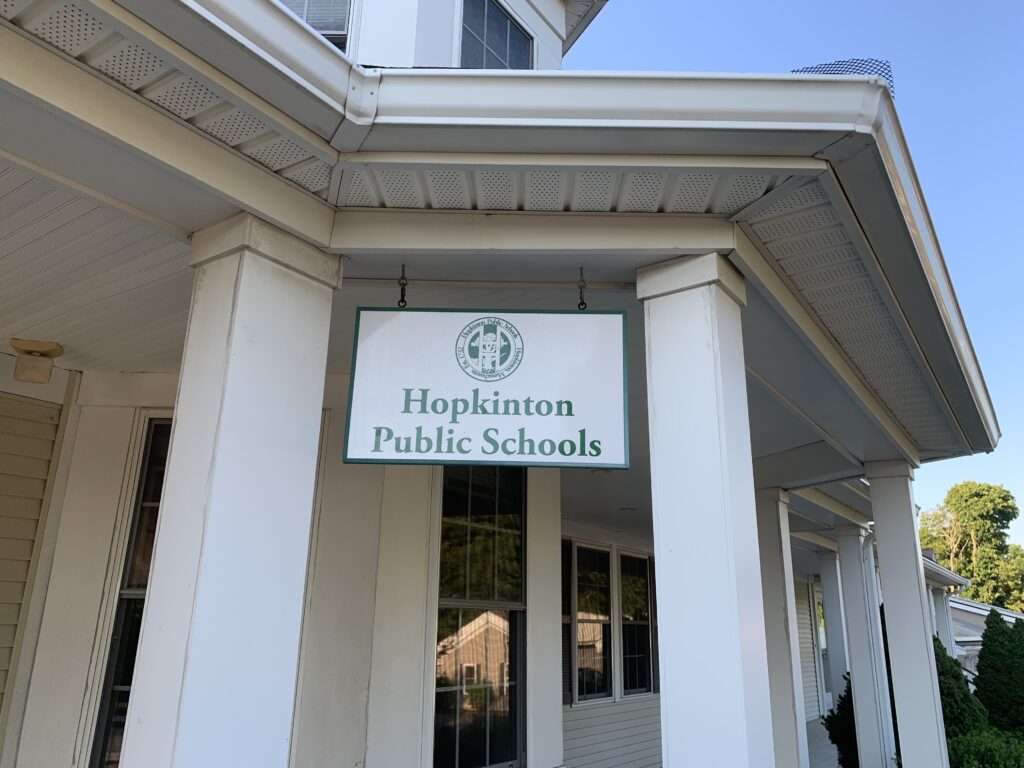The School Committee on Thursday voted 4-1 to approve a fiscal year 2024 budget totaling $60,172,752, a slight change from the proposal members had been working with previously. Holly Morand cast the opposing vote.
The increase of 8.4 percent is well above the 5.1 percent guidance provided by the Select Board.
The budget reflects funds for therapy services, which were slated to be cut but put back in following public outcry over many weeks. There also was a change increasing 0.1 of a staff position for nursing up to 0.4 based on need, according to Superintendent Carol Cavanaugh.
Before that decision was made, the budget process that started in September was reviewed. Cavanaugh noted that the district’s population of high-need students is 29.4 percent, compared to 17 percent in 2010-11.
She also referred to population projections for the end of FY24 at 4,160 students. However, the current enrollment is 4,184 students, which is 106 more than estimated.
Talking about proposed directors positions to oversee curriculum instruction and assessment in grades K-5 and grades 6-12, Cavanaugh said the directors would help the district best determine how to teach kids with disparate needs. The third director is to lead the preschool.
The budget contains 20.35 staff requests at a total of $1.3 million.
Cavanaugh referred to a list of needs presented by the Hopkinton Teachers Association seeking an additional 15.7 positions at a cost of $729,000. The superintendent explained that during the budget process, 9.5 other positions had been requested by principals but did not go forward. If all these additions were included in the budget it would bring the overall increase to 10.6 percent.
Director of Finance Susan Rothermich said administrators are working on strategies to bridge the gap between the town’s 5.1 percent guidance and the School Department’s 8.4 percent increase.
A few possibilities would be to have one-time purchases (i.e. science tables) funded by free cash and use an increased amount from some revolving funds, Rothermich said.
School Committee member Jenn Devlin said town officials seemed positive they could make an overall town-wide budget work without a Proposition 2 ½ override.
Chair Nancy Cavanaugh noted that the amount of state funding is difficult to estimate with a new governor in office.
Morand outlined her concerns about the budget and the process. She said that a formalized relationship had to occur with the Special Education Parents Advisory Council (SEPAC) going forward. She suggested looking into neighboring communities to see what they are doing.
Other members agreed this step would be positive.
“We value you and want to work more collaboratively,” she said of SEPAC.
Morand also referred to a state mandate that requires a designated SPED director if there are more than 4,000 students in a district. Director of Student Services Karen Zaleski said leadership of that department was in her purview and Hopkinton always has been in compliance with that regulation.
Morand noted that Zaleski’s job was more “multi-faceted,” and she wondered if the SPED director had to only oversee that one department. An opinion from town counsel was to be sought.
In addition, Morand said she couldn’t justify adding administrators to the SPED department when the teachers and therapists say more “student-facing” staff is needed.
She said she also is in favor of teacher forums to give the educators space to be heard.
“I want to get it right for every kid. That’s my only focus,” Morand said.
Vice chair Amanda Fargiano said having directors “hopefully will be good for everyone,” because they could identify and express what is needed in curriculum assessment and instruction to make the SPED program stronger.
Cavanaugh and Rothermich said that in mid-year, if additional staff is found to be needed, they will come back to the School Committee with a request as has successfully been done in the past.
Grade configurations reviewed again
In other business, ahead of a Feb. 2 vote, the School Committee again reviewed the pros and cons of having a Grade 2-3 versus Grade 2-3-4 potential replacement/remodel of Elmwood School.
Whatever configuration is chosen, it will impact the rest of the district’s buildings.
One of the main advantages of a three-grade school is the fact that the Massachusetts School Building Authority will provide more funding, a savings of $15 million to the town, chair Nancy Cavanaugh said.
A Grade 2-3 Elmwood School would result in costs of $295 million to $302 million across the district, but a Grades 2-3-4 school would total $280 million to $288 million, when MSBA reimbursement of 20-25 percent is factored.
A two-grade school would mean an additional 108,000 gross square feet is needed across the district, according to a recent study. A three-grade school would mean 68,000 GSF additions at the other schools.
Nancy Cavanaugh said she had heard concerns about how Grades 5-6 teaching models would work. In Grade 5, two teachers work with the same group of kids, while in Grade 6, each teacher has one specialty.
Other concerns expressed to the board have been about teachers losing colleagues to other buildings or switching schools as the grades change.
Jenn Devlin noted the district would have five years to work on making transitions go smoothly for everyone.
Batlle-Rafferty will not seek re-election
School Committee member Lya Batlle-Rafferty, who also serves as a liaison on the Elementary School Building Committee, said she was not going to seek re-election. She emphasized the importance of another committee member stepping forward to serve as a liaison to the ESBC.
Devlin also is not seeking re-election this spring.
The chair mentioned that the members could change their minds.



















0 Comments